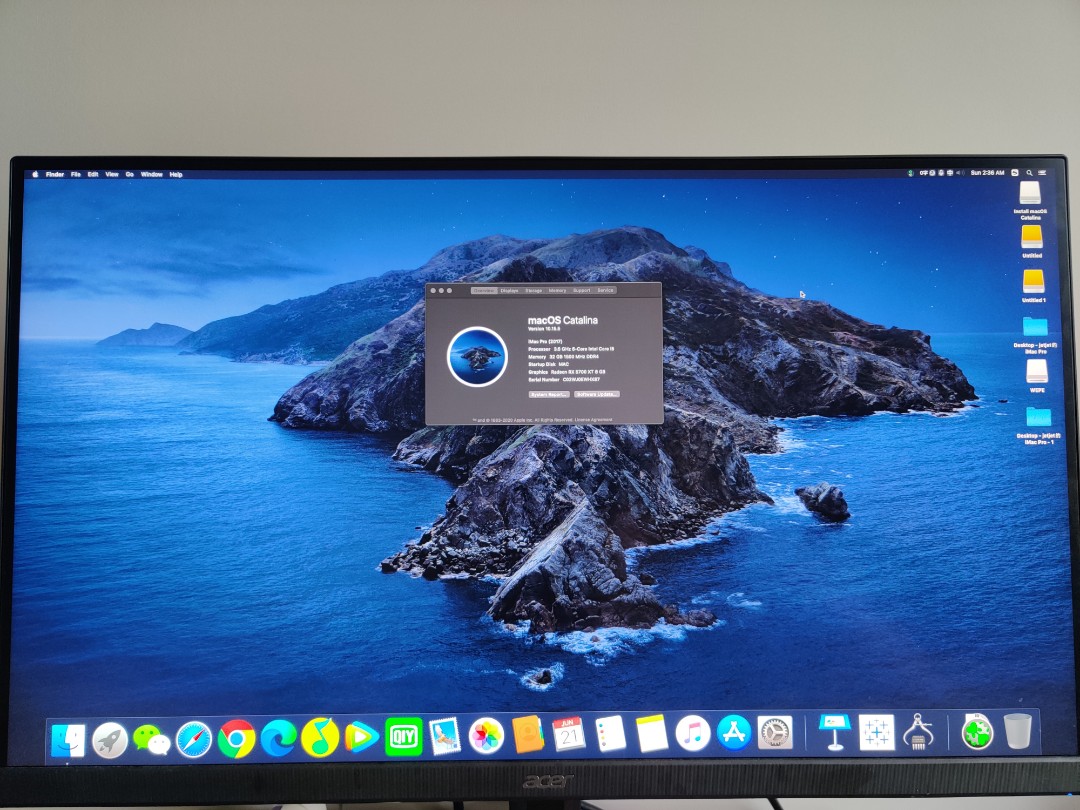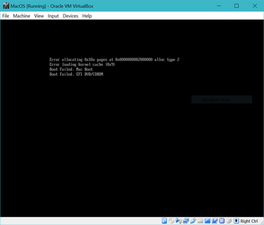Efi Pc For Mac Os
Recently, I got an issue with my OpenCore EFI partition on my Hackintosh system. I messed up the config.plist and it makes my macOS Catalina Hackintosh won’t boot properly. Fortunately, I have another hard drive with Windows 10 installed on it. So, I can edit my config.plist in the EFI partition and now it works again.
By default, you cannot see the macOS EFI partition from Windows Explorer, even if your macOS hard drive is connected to your PC. But, there is an easy way to mount the macOS EFI partition under Windows 10. I will show you how to do this in a moment.
Mount the EFI partition on Windows 10
If that's the case, click the Utilities menu and, when Disk Utility opens, choose the hard drive you want to install macOS on and click the Erase tab. Make sure Mac OS Extended (Journaled) is.
- 01 – Grub2Win Free. Grub2Win supports 64 and 32 bit EFI and BIOS on Windows 10, 8, 7 and XP.
- For Yosemite and El Capitan: For Mountian Lion and Mavericks (sorry forgot you need Tiamo's Boot.efi for them).
- That leaves a security hole in the system, because although users might have the latest OS version installed, if the EFI firmware is an older version, it lacks the latest fixes of known firmware issues. Apple released EFI updates separately, but since 2015 the EFI update is bundled in the software update Apple has been pushing out to users.
- Complete this download registration form to get access to all of our EFI digital printer and productivity software downloads.
Open Windows 10 command prompt as administrator. And then, run “diskpart” command.
Output:
Next, list the disk
Output

As you can see, I have 5 hard drives connected to my PC. In this case, my macOS/Hackintosh disk is Disk 3. Yours might be different. Now I will select disk 3
Output
As you can see, my Disk 3 is now the selected disk. Next, we will show the partitions in Disk 3.
As you can see, there are 4 partitions in Disk 3. In my case, the EFI partition is Partition 1. It is easy to know which one is the EFI partition. The EFI partition volume size is exactly 200 MB.
Now let’s mount the Partition 1 and assign drive letter to it.
Now, open Windows Explorer and you should see your EFI partition is mounted there.
Common Issue
In some cases, Windows 10 users cannot open the mounted EFI partition and got the error:
Efi Pc For Mac Os 10.13
You don’t currently have permission to access this folder.
In case you get this error, I would recommend you to download Explorer ++ program and then run it as administrator. It can open the EFI folder perfectly without issue.
At every opportunity, Apple touts the security advantages of controlling both software and hardware: it's why the “It just works” slogan has become synonymous with the company. Still, Apple now has to address an industry-wide issue that leaves a portion of Macs vulnerable to hacker attacks.
The Problem

The flaw, discovered by security researchers at Duo Labs, is in the EFI (Extensible Firmware Interface) firmware, which sits beneath the operating system. EFI is the BIOS replacement originally developed by Intel that aims to overcome the limitations of the PC BIOS. Due to the firmware's level of privileges, if a hacker can gain access to it then their attack cannot be detected. That changes with macOS 10.13 High Sierra, which contains a tool validating the authenticity of the firmware running on the Mac.
Download CleanMyMac X from MacPaw’s website and clean up to 500MB of junk data from your computer while enjoying all the features of the software without major limitations.
The vulnerability allowed the CIA, for example, to spy on targeted Mac users, as a so-called Vault 7 cache of secret CIA documents released by WikiLeaks show. The catch is that the flaw isn't new and seems to require physical access to the Mac in order to work.
What Does That Mean to Mac Users?
After analyzing 73,000 Macs currently in use, Duo Labs has discovered a discrepancy between the firmware versions they expected the machines to be running and the actual EFI version installed. That leaves a security hole in the system, because although users might have the latest OS version installed, if the EFI firmware is an older version, it lacks the latest fixes of known firmware issues.
Apple released EFI updates separately, but since 2015 the EFI update is bundled in the software update Apple has been pushing out to users. However, if you are running one of the 16 Mac models identified by Duo Labs, there is a chance that your system hasn’t received any EFI update at all: iMac 7,1 to 10,1, MacBook 5,1 and 5,2, MacBook Air 2,1 and more.
Windows Efi Mac
How You Can Check the EFI Firmware Version
Mac Efi Boot
You can check what EFI version your system is running by clicking on the Apple menu and selecting About This Mac > System Report > Hardware. In the hardware overview section macOS displays the Model Identifier, the Boot ROM version and the SMC version number your Mac is running.
You can compare that to the firmware update number Apple lists in a support document dedicated to EFI and SMC updates for Intel-based Mac computers. Apple has stopped updating that page since September 2017.
How to Update the Firmware
If the firmware version displayed in the hardware overview is older than that listed for your Mac, then download the firmware and apply the update. Or update the operating system to at least macOS 10.12.6 Sierra, because this will include all the necessary security updates and the correct firmware.
It's important to identify your Mac model, because that's how to correctly determine which firmware you’re on and how to install the necessary update. macOS won't let you install firmware that's not developed for the model you are trying to update.
The problem is that macOS won't alert users if an EFI update has failed to install on the hardware. Therefore it’s important the user checks manually, since they won't be able to close the backdoor that hackers can access to eavesdrop or steal sensitive information, and neither can Mac optimization apps. While CleanMyMac, MacKeeper, CCleaner, OnyX and the like are highly capable apps for keeping your Mac clean, they cannot alert users about the EFI firmware vulnerability.
Unfortunately, the same goes for anti-malware apps such as MalwareBytes, due to the EFI's nature of operating beneath the operating system software. As a result we recommend spending a couple of seconds to ensure your Mac is secure by checking if it is running the latest firmware version and, if not, upgrading as soon as you can.
EFI vulnerability isn't just related to Apple. Duo Labs has said that it has chosen the Apple ecosystem as it offered the most consistent data when compared to Microsoft's Windows PCs running Intel chips. As demonstrated by hackers years ago, the EFI flaw has been present in Windows PCs, allowing hackers to exploit it and install ransomware.
Best Mac Optimization Software of 2020
| Rank | Company | Info | Visit |
| |||
| |||
|
Mac Efi Firmware
Get the Best Deals on Mac Optimization Software
Mac Efi Lock
Stay up to date on the latest tech news and discounts on Mac optimization software with our monthly newsletter.
